Road accidents are a major problem in Senegal and account for a significant number of deaths and injuries each year. The number of road accidents has steadily increased over the past few years and the causes range from speeding to reckless driving. The government of Senegal has made great strides in improving road safety, yet still has a long way to go when it comes to reducing these numbers and ultimately preventing accidents from occurring.
The following are a four-phase approach that the government of Senegal could take to help reduce the number of road accidents in Senegal and protect the lives of the citizens.
Phase 1
In Phase 1, we suggest the government of Senegal to implement the below few simple measures that can help reduce the risk of car accidents and keep drivers safe on the roads.
- Well-maintained roads
- Traffic signs
- Light traffic flow
- Intelligent traffic lights
- Warning signs
- Regulatory and guide signs
- Live traffic cameras
- Weighing stations
- Highway patrols
Well-maintained roads the government of Senegal should enhance its overall infrastructure, particularly its roads. Poorly maintained roads are more likely to lead to accidents, as they are less safe and less conducive to safe driving practices.
Well-maintained roads; however, play an important role in reducing the risk of an accident. Highways and roads should be inspected regularly to look for potholes, cracks, and other hazards that can cause an accident. Speed limits should also be strictly adhered to, as a driver traveling too fast is much more likely to be involved in an accident.

Traffic signs are a vital part of road safety. These signs are important because they let drivers know what they should be doing while they are on the road. Signs like stop, yield, and speed limit signs provide drivers with important information that can keep them safe and ensure they are driving as safely as possible. Traffic signs alert drivers to potential hazards, like sharp turns or traffic congestion, that they should be aware of and take extra caution when navigating.
Traffic signs come in various shapes, colors, and sizes. This is done to ensure that the message associated with the sign remains clear even in situations where there’s a distance between the driver and the sign. Red is the color of stop signs, whereas yellow is used for warning signs. Yellow is also used for prohibiting signs and white is used for regulatory texts.
- Stop Sign: The stop sign is one of the most recognizable traffic signs out there. It features an eight-sided, red sign with a white border and the word “STOP” in white on the center. When drivers approach these signs, they should come to a complete stop before proceeding. This sign dictates when drivers should come to a complete stop and is usually seen along busy roads. It is important to obey traffic laws, as violations of these signs can lead to citations or other legal issues.

- Yield Sign: The yield sign is an eight-sided yellow sign with a black border and the word “YIELD” in black on the center. When drivers approach these signs, they should slow down and let other vehicles, pedestrians, or cyclists pass before proceeding. These signs are typically used for busy intersections where you need to give way to oncoming traffic. It is important to obey traffic laws, as violations can lead to citations or other legal issues.
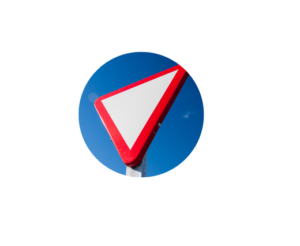
- Speed Limit Sign: Speed limit signs provide drivers with an indication of the maximum speed they can drive in a certain area. The signs are rectangular with a white background and black lettering, and display the maximum speed that is allowed in a specific area. These signs are often posted in areas where a driver needs to slow down significantly from the standard speed limit. It is important to observe the speed limits, as violations can lead to citations or other legal issues.

- Do Not Enter Sign: The do not enter sign is a crimson red eight-sided sign with the words “DO NOT ENTER” in white lettering. This sign is used to indicate that drivers are not allowed to enter a certain area, usually a one-way road or a restricted area. It is important to observe these signs as they are there to ensure safety and prevent collisions or other legal issues.
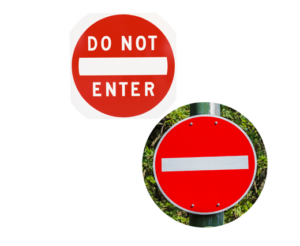
Light traffic flow is an approach which aims to reduce congestion on the roads and improve safety, by preventing traffic from becoming too dense and making sure that roads are kept relatively clear for traffic to pass through.
Light traffic flow can be achieved in a number of ways. Traffic calming measures such as speed bumps and roundabouts can be introduced to slow down cars and encourage a more even traffic flow.
The introduction of additional traffic lanes can help to reduce the number of cars on the roads, as well as ease merge points where two lanes come together. Intelligent traffic lights can also be used to better manage the flow of traffic, by changing the timing of lights to help traffic move more freely.
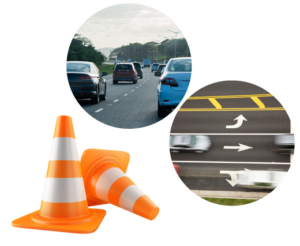
Intelligent traffic lights use technology to detect the roads’ current conditions and can adjust the traffic flow accordingly. This can help reduce travel times, manage traffic, and reduce accidents caused by drivers failing to recognize when it is safe to proceed. Intelligent traffic lights can be programmed to detect when a vehicle is approaching, then in relation to the traffic flow, adjust the length of the green light required to safely proceed. This will help ensure that drivers are given enough warning to be able to proceed in a safe manner.
Another benefit of intelligent traffic lights is the ability to interact with other vehicles. This technology would be able to detect if a vehicle was approaching an intersection too quickly, and would then slow down or adjust the green light to ensure that the driver can safely pass through. These systems are not only able to make split-second decisions, but also have an in-depth understanding of the road conditions which helps to prevent dangerous intersection behavior, such as running through red lights.
Finally, a major benefit of intelligent traffic lights is the improved safety of pedestrians. With the technology to detect when pedestrians are approaching the intersection, the traffic lights are able to slow down or stop traffic in order to give them enough time to safely cross the road. This is especially important for those with disabilities or for pedestrians that are more vulnerable.
Intelligent traffic lights are a great solution for reducing deadly road accidents. It is able to detect when a vehicle is approaching, adjust the green light depending on the flow of traffic, and even detect and respond to pedestrians crossing the road. It is an innovative solution that is sure to make roads safer for everyone.
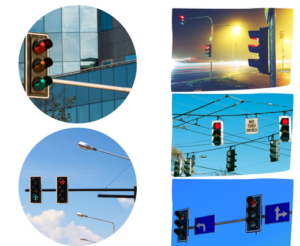
Regulatory and guide signs are used to control the way traffic moves. These warning signs can be red or blue in color, usually with white lettering. They tell us about all the different types of laws and regulations for the road. Examples of regulatory signs are “No Left Turns”, “Speed Limit”, and “Keep Right”. These signs typically have a very clear message that drivers must abide by the given rule of the road.
Guide signs are used to tell drivers/riders where to go and what is coming up. These signs use specific shapes in combination with a range of colors to help distinguish the message they are conveying. Examples of the types of guide signs are “One Way”, “Stop Ahead”, and “Yield”. These signs essentially help drivers navigate the road in a safe and efficient way, providing crucial information about the road ahead and upcoming turns or lanes.

Warning signs are used to alert drivers of potential hazards on the road. These signs are usually yellow or orange, with black lettering, and feature symbols and images to help quickly convey the message. Examples include “Slippery When Wet”, “Animal Crossing” “Blind Curve Ahead”, and “Divided Highway Begins”. These warning signs provide crucial safety information and drivers should always heed the message and take the appropriate action.
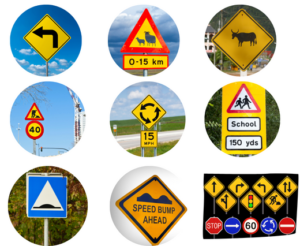
Live traffic cameras are another element of implementing road safety. These cameras monitor traffic flows and identify areas where traffic is at a higher risk for accidents. Live traffic cameras provide an additional layer of awareness, allowing drivers to be aware of the traffic conditions in the areas before they enter. These cameras can also relay information to drivers in real time, as accidents happen, so drivers have time to react and plan their routes accordingly.

Weighing stations are located at strategic points along highways and roads, and ensure that truck and other vehicle operators are compliant with weight regulations. Overloading a truck or trailer can result in decreased vehicle stability, thus heightening the risk of an accident. Weighing stations work to reduce this risk by ensuring loads are distributed evenly, and that operators are not driving with an overloaded vehicle.

Highway patrol officers are another important tool for preventing road accidents. They patrol our roads and highway systems and look for vehicles that are driving recklessly, or operating without the necessary safety measures. By looking out for reckless drivers and keeping our roads safe, highway patrols are an important part of keeping accidents from occurring.
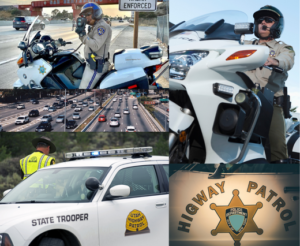
Next: How can we prevent road traffic accidents in Senegal? Phase 2
